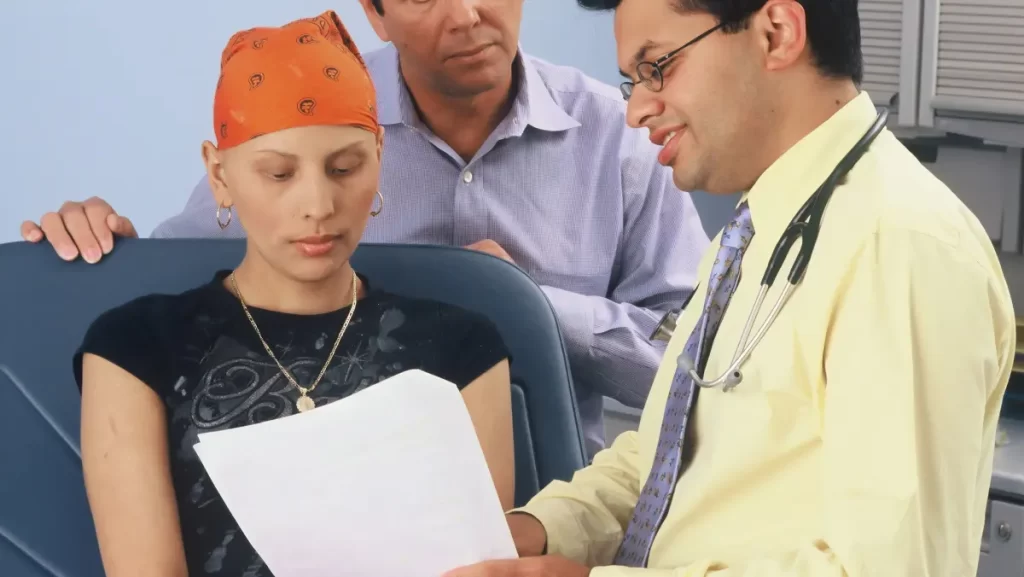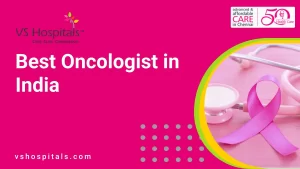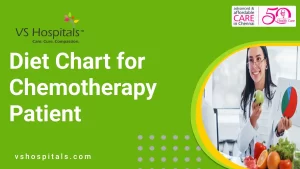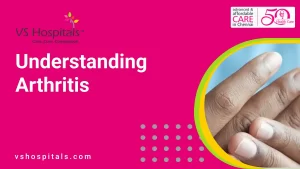All you need to know about Breast Cancer
Every Year of October is referred to as the ‘breast cancer awareness month’ and people all over the world show their support for people who are affected by breast cancer. It is the commonest cancer affecting women across the globe. In India, it has become the commonest cancer where urban women are so alarming in recent years as it has become like an epidemic.
Symptoms of breast cancer
- Breast lump
- Thickening or dimpling
- Retraction or inversion of the nipple.
- Shape of the breast
- Nipple discharge
Types of breast cancer
Breast cancer is biologically divided into three types:
- 1st group – Hormone Sensitive Tumor where the tumor cells harbor estrogen and progesterone inside the cancer cells so they are hormone-sensitive. Anti-hormones can control the disease.
- 2nd group – Her2/ neu positive cells where about 20 to 25% of breast cancer are developed to new mutations in the cancer cells. They are called Her2/ neu enriched breast cancer which is an aggressive tumor that has to be treated separately.
- 3rd group – is Neu Receptor-Positive – A) heterogeneous receptor B) Progenis receptor and C) Hetero receptor where all three are negative. So, we call them triple negativity cells. The treatment is different for these 3 groups.
Stages of breast cancer
We divide breast cancer into 4 stages.
- Stage 1 is where the breast lump is only about 1 or 2 cm confined to the breasts and the cure rate is almost 99%. Lumpectomy is enough here.
- Stage 2 is where the breast lump looks like a gooseberry with a size of about 5 cm confined to the breasts and the armpits. It is easily approachable and mobile because, after the development of the tumor, the cells travel to the adjoining lymph glands in the armpit. So, when there is a lymph node and the enlargement in the armpit it becomes stage 2. The cure rate is about 97-98%. You should get upfront chemotherapy for reducing the tumor size, especially the lumpectomy or mastectomy.
- Stage 3 is where the tumor becomes bigger than 5 cm resembling the size of an orange or a big lemon and if the lymph nodes in the armpits are fixed and not mobile it becomes stage 3. It is also called locoregional disease. It is a bit tumorous for the breasts where the armpit cannot be operable. The cure rate is about 90%. Mastectomy and chemotherapy would really help.
- Stage 4 is where the cancer cells spread beyond the breasts and armpit which is close to the bones, lungs, liver, brain, skin, or anywhere with widespread dissemination. At this stage, breast cancer is incurable but we can prolong the life of an individual for a few more years. This is the existing situation till date. There is no question of surgery only chemotherapy plus hetero neu enriched therapy is enough for this stage.
It is important to note that up to stage 3, breast cancers are curable but not beyond that. You should understand the importance of diagnosing breast cancers at an early stage to avoid higher complications in the future.
Factors affecting breast cancer
Firstly, during the olden days, women used to have 7 or 8 children in their 20s or 25s and they breastfed the children for 1.5 or 2 years compared to the women in the present era. This can create pores causing breast cancer. Secondly, an overweight woman will have an increased secretion of estrogen stimulating the breasts causing breast cancer.
Thirdly, women developing menstrual periods, before the age of 12, and women who have periods after the age of 55 (i.e.) for a long period of time stand a higher chance of developing breast cancer. Finally, breast lumps develop due to the lifestyle changes causing the actual cancers.
Treatment for breast cancer
- Surgery
- Chemotherapy
- Hormonal therapy
- Radiation
- Immunotherapy
- Lumpectomy
Process of treating the types of cancer
In Hormone Sensitive Disease, during stage 1 whole lumpectomy is done by giving radiation to the breast and continuing her with hormones. During Stage 2, you can do surgery and radiation and later maintain them on hormones. During Stage 3 hormones are given first to reduce the size and make it operable.
After which, operation and radiation are done for hormone maintenance. It is difficult to cure Stage 4 but since many newer drugs are available nowadays, we can give hormones and prolong their life for many years. This is applicable only for hormone-sensitive tumors.
In Hetero Neu Enriched Tumor, we have to give chemotherapy besides special drugs which will counteract the hetero neu antigen in the cancer cells to tackle the hetero neu part of the breast cancer. The duration of treatment will be for about a year during the early stages.
Of course, for stage 4, there is no cure where you will have to treat it for years till the disease is under control. So, chemotherapy plus percentile is the treatment of choice in breast cancer with hetero neu positivity.
Screening the breast cancer
- Mammogram – Painless and simple screening test.
- X-Ray & Clinical Examination – Checks the nature of the lump
- Ultrasound, Biopsy, CT or PET Scan – Covers the entire body from head to foot.
- MRIs – Pick the small lesions in the dense breasts

Cost for treating breast cancer
In India, it is freely available in major cities at an affordable cost say for Rs. 20000 – 25000. It is a boon for cancer patients in India because the treatment is planned depending on the stage, biology, and affordability. But in recent years, as the drugs along with the surgery have become quite expensive, an average, about 3-6 lakhs will be required for the treatment of breast cancer.
Therefore, it is better to go for medical insurance for around 4 – 5 lakhs which helps in tax deduction because nobody knows when a person would develop breast cancer.
Prevention of breast cancer
Breast cancer is an easily preventable disease. Prevention can be categorized into primary prevention, and secondary prevention. Primary prevention includes leading a healthy life, maintaining standard body weight, avoiding junk foods, animal fat, and animal protein, intaking a lot of vegetables and fruits, avoiding smoking or drinking alcohol, and having control over diabetes.
Moreover, if a woman gives birth to children, she should feed them for a longer period which can highly prevent the formation of breast cancer and reduce the incidence of breast cancer. Secondary prevention is the early diagnosis. A woman needn’t lose her breasts because we can easily cure the disease if diagnosed at an early stage. So, prevention is always better than cure.
Causes
Breast cancer usually starts in the inner lining of the milk ducts or the lobules that supply them with milk. From there, it can spread to other parts of the body.
FAQ
Why is breast cancer so alarming?
Breast cancer is the commonest cancer affecting women all over the world. In India, the commonest and urban women are so alarming in recent years because when I entered the field of cancer in 1971, out of 100 women developing cancer about 18 developed cancers of the breasts in Madras whereas in 2020, out of 100 women developing cancer 45 are from breast cancers.
So, a 250 % increase in about 50 years of time is definitely alarming. It’s like an epidemic, and it is one of the reasons why we are concerned about this breast cancer, and we are celebrating this month as ‘breast cancer awareness month’.
What are the reasons and causes of breast cancer?
There are many reasons and causes of breast cancer. It is not due to the infection it is because of the bacteria that has caused this lifestyle disease. There are various other factors that we call risk factors that are responsible for the higher incidence of breast cancer.
1. Number of children in olden days:
During the olden days, women used to have 7 or 8 children in their 20s or 25s and they breastfed the children for 1.5 or 2 years compared to the women in the present era where they have only one child who gives 2-3 months of breastfeeding.
The breasts develop due to the female hormone estrogen and continue to develop the estrogen of the breasts without interruption. So, if there is only a child and a few months of breastfeeding, the breasts which are stimulated by estrogen and the pores cause breast cancer.
2. Overweight/ Obesity:
As you know, estrogen is responsible for breast development and breast cancer formation. For an overweight woman, there will be an increased secretion of estrogen which stimulates the breasts causing a higher incidence of breast cancer.
3. Hormonal Factors
For instance, women develop menstrual periods, before the age of 12, and women who have periods after the age of 55 (i.e.) for a long period of time, the breasts are stimulated by estrogen where there is a higher chance of developing breast cancer. On the other hand, if the first child is born after the age of 28, they stand a higher chance of developing breast cancer.
4. Breast Lumps
About 40% of women develop breast lumps in their lifetime. Some types of breast lumps are not actually cancers, but we should not ignore them. We have to do needling and biopsy. If it shows A – typical cells, then that is going to develop into a cancerous cell. Besides breast lumps, lifestyle also plays an important role. It includes intake of alcohol and smoking which causes a higher incidence of breast cancer.
What are the 3 cardinal symptoms that one should not avoid or ignore?
A breast lump is the commonest symptom which is most important one. Thickening or dimpling is another symptom that can represent cancer. The last one is retraction or inversion of the nipple. You should understand that pain is a late symptom, but breast lump is the commonest among all where the immediate diagnosis has to be done.
How can one get the breast screening done?
In many multispecialty hospitals including cancer hospitals, we have facilities for screening breasts with the help of mammograms. A mammogram is the most sensitive and effective method of screening for breast cancer.
So, anyone can walk in for a breast cancer screening combined with clinical examination plus X-ray mammography which can also be complemented with ultrasonic mammography.
It is the simplest procedure but also the best method of screening for breast cancer.
Is a mammogram painful?
Normally, it is not a painful procedure. There may be some discomfort if you opt for X-ray mammography because the two x-ray plates that compress the breasts are not painful but cause some discomfort which is tolerable. Whereas, ultrasound mammogram or a thermal mammogram is an easy and simple method of screening that is not painful at all.
Does a woman with a strong family history are vulnerable or at a higher risk to develop breast cancer?
Definitely, yes. About 10% of breast cancers occur due to familial cancer. About 5 % of family members undergo a tumor suppress surgery (BRCA 1 or BRCA 2) where the higher chances of developing breast cancer would range from 60 – 80%.
Moreover, 40 – 50% of women develop Ovarian cancer due to the genes that are mutated causing a higher incidence of breast cancer. The important thing can be familial or can be acquired also and that can be detected with a simple blood test.
In the olden days, it was very costly In America it required about 1000 dollars (i.e) Rs.75000. But in India, we can do the genetic testing for the BRCA mutation test just for 20000 rupees. It is an important method of diagnosing familial cancer.
Supposing, if any of the family members has a strong history, at what age one should go for genetic screening?
It depends on the high risks of the family. For instance, if there are two or more members having breast cancer from the same family, it is better to do genetic screening at the age of 20 itself. It is considered to be very important because we know that breast cancer is caused only by mutation with or without symptoms.
In Madras or in India, the usual age group of breast cancer is anywhere between 40 – 60 but for familial cancer, it is definitely under 40. Early detection can prevent it from becoming worse. So, screening has to be started at the age of 20 and above.
How does menstruation in reproductive history play a role in breast cancer?
If the menstruation starts very early (i.e.) below 12 years and if it continues after 55 years of age, it can be a long period of reproduction which means that the women’s breasts are stimulated by uncontrolled estrogenic stimulation resulting in breast cancer formation.
The prolonged periods of reproduction are normally at the age of 30 whereas if it crosses 40 years of age, then they stand a higher chance of developing breast cancer.
Prolactin and progesterone are the main hormones during lactation and fertilization. So, the women’s breasts can be protected for a period of 2.5 years from the estrogen. If there are 7 or 8 children, then almost 25 – 30 years of their reproductive period can be free from estrogenic stimulation which means there is very little chance of developing breast cancer.
But, in modern days, women having 1 or 2 children don’t continue to breastfeed for longer periods. This definitely aggregates the higher incidence of breast cancer.
How often and in what frequencies one should one do breast self-examination?
Firstly, in the high-risk group, (i.e.) after the age of 20, on the 5th day of periods of every month, a woman should feel their breasts by palpating it and find out if there are any abnormal lumps, thickening, or inversion of the nipple. Normally, it is advisable to do a self-breast examination at the age of 40. It is complementary to mammograms.
Is breast cancer curable?
Yes, breast cancer is eminently curable. We divide breast cancer into 4 stages.
* Stage 1 is where the breast lump is only about 1 or 2 cm confined to the breasts and the cure rate is almost 99%.
* Stage 2 is where the breast lump looks like a gooseberry with a size of about 5 cm confined to the breasts and the armpits. It is easily approachable and mobile because after the development of the tumor, the cells travel to the adjoining lymph glands in the armpit. So, when there is a lymph node and the enlargement in the armpit it becomes stage 2. The cure rate is about 97-98%.
* Stage 3 is where the tumor becomes bigger than 5 cm resembling the size of an orange or a big lemon and if the lymph nodes in the armpits are fixed and not mobile it becomes stage 3. It is also called loco regional disease. It is a bit tumorous for the breasts where the armpit cannot be operable. The cure rate is about 90%.
* Stage 4 is where the cancer cells spread beyond the breasts and armpit which is close to the bones, lungs, liver, brain, skin, or anywhere with widespread dissemination. At this stage, breast cancer is incurable but we can prolong the life of an individual for a few more years. This is the existing situation till date.
It is important to note that up to stage 3, breast cancers are curable but not beyond that. You should understand the importance of diagnosing breast cancers at an early stage to avoid higher complications in the future.
With your experience what age do people come to you for a consultation?
It used to be very advanced in the 70s and 80s. But in recent days, we see the majority of our breast cancer patients with stage 2 which is about 60%. Stage 1 is only about 5 %, Stage 3 is about 20 -25% and 10% of them come in Stage 4. If patients come to us at an advanced stage (i.e) at stage 4, we are at a loss because we will not be able to cure them.
We can only control the disease, prolong their life and make them comfortable. To overcome this, diagnosing it at an early stage can make them lead a healthy life.
How is breast cancer treated?
At the moment, the treatment of breast cancer is complex and standardized. For stage 1, you can straightaway go for surgery. For stage 2, you can go either for chemotherapy or hormone treatment.
We can say that the treatment is now very standardized by using 5 various ways: Getting surgery, chemotherapy, hormonal therapy, radiation, immunotherapy. Surgery is done for a woman with a lump.
If they come in stages 1 & 2, we don’t have to do the section of the breasts. Instead, we can save the breast which is called ‘Breast-conserving surgery’ or ‘Lumpectomy’. This is compatible where the women can retain their breasts.
Surgery and radiation are necessary depending on the stage of the disease.
- Stage 1 lumpectomy is enough
- Stage 2 should give upfront chemotherapy by reducing the tumor size and go for lumpectomy or mastectomy.
- Stage 3 immediately we should go for mastectomy and chemotherapy
- Stage 4 no question of surgery only chemotherapy plus hetero neu enriched therapy.
The treatment depends on the biology of the disease, stage of the disease and treatment place because not all institutions are equipped with proper treatment strategies to deal with these types of cases. So, choosing an institution where proper treatment is provided plays an important aspect in breast cancer management.
Do you have any side effects due to chemotherapy?
Definitely, all treatments have side effects. Chemotherapy has major side effects but if it is properly given by an experienced chemotherapist the side effects are manageable, tolerable and acceptable.
Mainly, hair loss is one of the main side effects of chemotherapy where it is difficult to avoid hair loss.
Secondly, depression of the bone marrow. Bone marrow forms the white cells, red cells, and platelets. When you give chemotherapy, there is a depression of the white cell formation, red cell formation, and platelets formation. Due to the white cell depression or low white cell count, you get neutropenia which results in higher chances of developing an infection.
By affecting the red cells, it causes anemia where you will have to give blood or blood stimulating hormones because it can affect platelet formation leading to a bleeding tendency of the lungs, nose, or other parts of the body. Platelets or drugs are usually given to counteract the side effects of low platelets.
Thirdly, the gastrointestinal tract and alimentary tract which can inflame your entire mouth, food pipe, stomach, and large bowel leading to sore mouth, vomiting, and loose stools. That’s why we advise the patients to have soft and bland food, not much spicy food.
Finally, infertility can affect the testis as well as the ovaries. Elderly people are not a concern but young people who are not yet married or who don’t have children have the major side effect.
A majority of the side effects are reversible where they will get back their hair, normal marrow, and alimentary tract system after a proper treatment which has no pain.
Whom should one consult if they have any of the above symptoms after diagnosis?
There are 3 branches of oncologists mainly surgical oncologists, radiation oncologists, and medical oncologists. Probably, it is better to consult a medical oncologist because they are physicians who take care of other systems, not only the breasts.
He will conduct a clinical examination to examine the breasts and the other systems. If he sees any hints of a lump or any abnormalities then you will be asked to take certain tests
The 1st test will be a mammogram which is a painless and simple screening test. It gives us some information about the nature of the lump whether it is cancerous or non-cancerous. So, a Clinical exam, mammogram, and biopsy are done here.
The 2nd test is done to find out the stage of the disease whether it is confined only to the breasts or if it has gone to the armpits or other parts of the body.
Based on that, an ultrasound examination of the abdomen, CT chest, or a PET scan. PET scan covers the entire body from head to foot. It gives us the information of the disease that has spread to other parts of the body where it is easy to determine the disease.
In India, it is freely available in major cities at an affordable cost say for Rs. 20000 – 25000. Whereas, the PET Scan in America costs about 3 lakhs. It is a boon for cancer patients in India because the treatment is planned depending on the stage, biology, and affordability. By considering all these, a patient can seek a proper investigation by preferably consulting a medical oncologist.
Is ovarian cancer related to breast cancer?
Yes, ovarian cancer is also a hormonally related cancer. It is familial but there are other lifestyle factors that are responsible for ovarian cancer such as breast cancer, overweight, excess consumption of animal fat and protein, diabetes, alcohol consumption, and smoking.
To some extent, breast cancer occasionally spreads to the ovaries also. If it spreads to the abdomen also it can spread to the ovary. In this way, ovarian and breast cancer are related and involved.
Can breast cancer spread from person to person or is it contagious?
No, it is not at all contagious or not an infectious disease because it is caused by mutation. Also, It is a lifestyle or a familial disease.
Is breast cancer treatment very expensive?
Unfortunately, it is expensive. The drugs along with the surgery are quite expensive. We have fine-tuning methods of radiation which are also expensive. On average, about 3-6 lakhs will be required for the treatment of breast cancer.
Therefore, it is better to go for medical insurance for around 4 – 5 lakhs which helps in tax deduction because nobody knows when a person would develop breast cancer.
Is a mammogram the only way to diagnose breast cancer or are there any investigations to diagnose other than mammograms?
A mammogram is the commonest method of diagnosing breast cancer. There are many ways of doing mammograms like ultrasonic mammograms, thermal mammograms, NCI mammograms and MRI mammograms.
It is one of the best methods of screening because clinical exams can detect lumps of size for about 1 cm or a little more whereas mammograms can pick up to 3 or 4 millimeters and it can help in very early diagnosis.
So, it is advisable for women to go for mammograms after their 40s or if they are prone to their family history, they should go for mammograms at the age of 30.
Do you have any special screening for women with dense breasts?
Yes, dense breasts are difficult to make out small lumps. MRI mammograms and thermal mammograms are easy to pick up even the small lesions in the dense breasts.
Final Note:
Breast cancer is an easily preventable disease. Prevention can be categorized into primary prevention, and secondary prevention. Primary prevention includes leading a healthy life, maintaining standard bodyweight by staying physically fit, avoiding junk foods, animal fat, and animal protein, intaking a lot of vegetables and fruits, avoiding smoking or drinking alcohol, and having control over diabetes.
Moreover, if a woman gives birth to children, she should feed them for a longer period which can highly prevent the formation of breast cancer and reduce the incidence of breast cancer.
Secondary prevention is the early diagnosis. A woman needn’t lose her breasts because we can easily cure the disease if diagnosed at an early stage. So, prevention is always better than cure.
Read also Avoiding and Preventing Cancer





